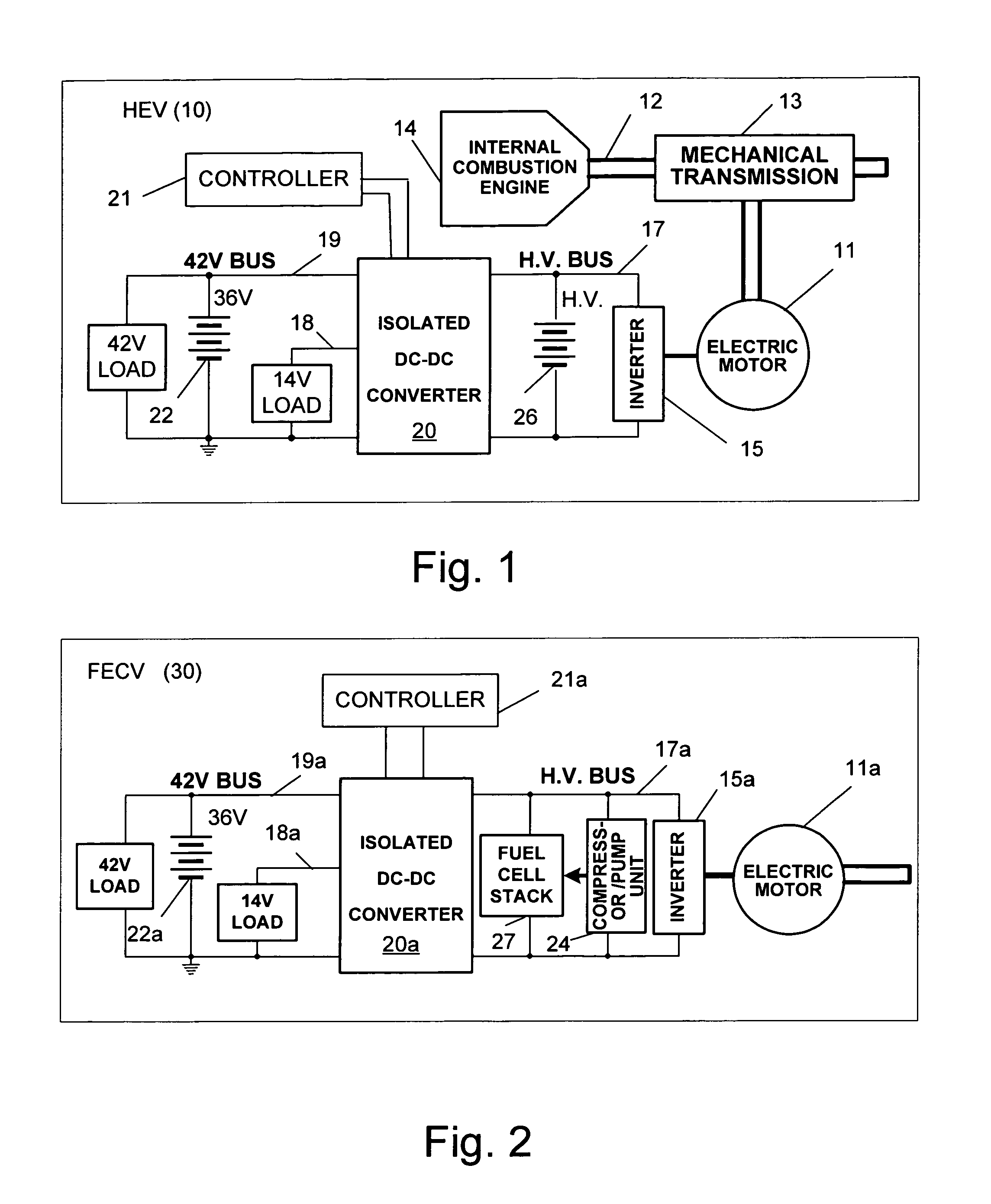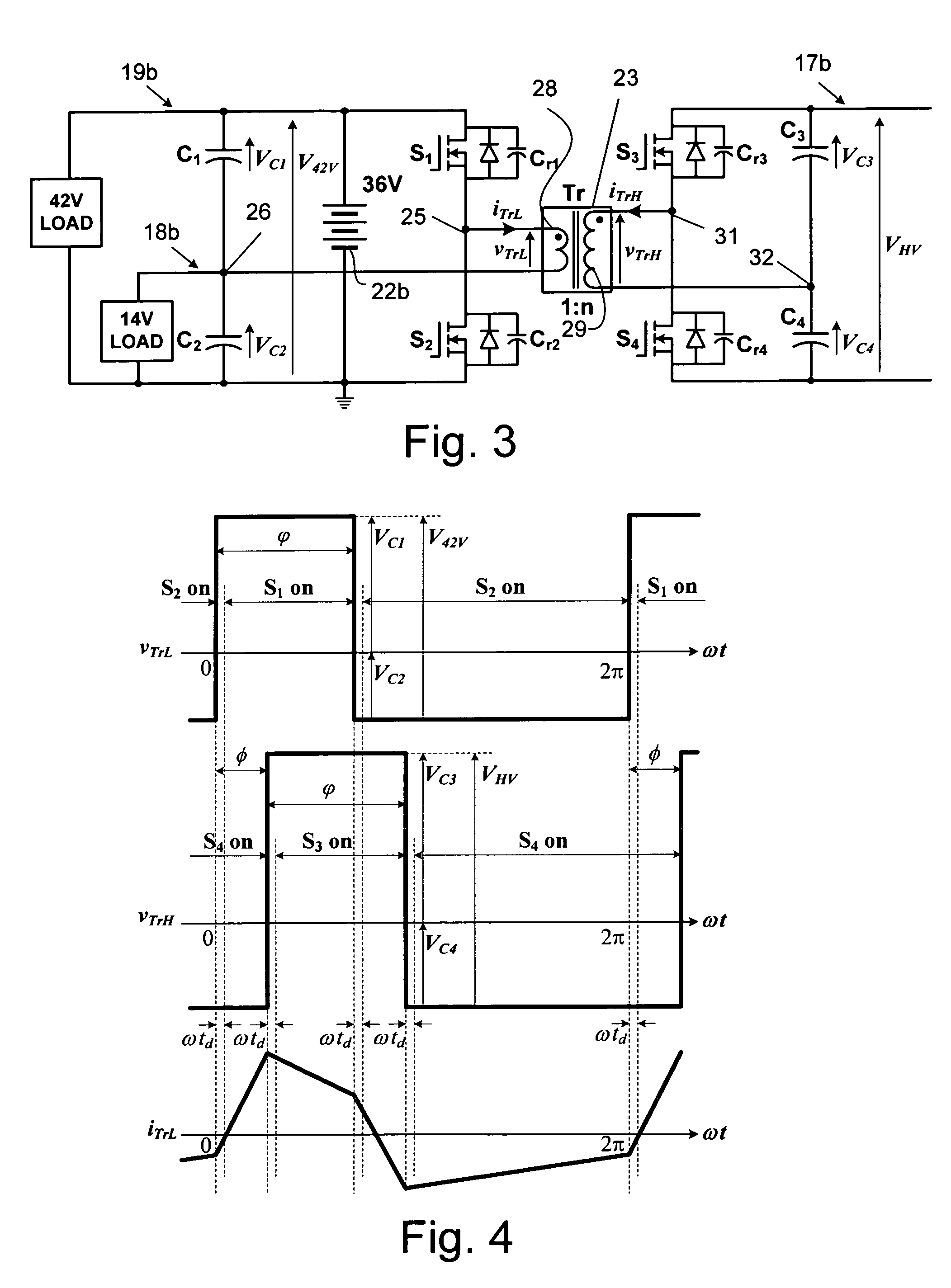Triple voltage dc-to-dc converter and method
a dc-to-dc converter and triple voltage technology, applied in the direction of hybrid vehicles, process and machine control, instruments, etc., can solve the problems of increasing volume and cost, increasing power losses in switches and inductor, and/or the size and volume of filter capacitors, etc., to relieve the burden of carrying a large current, reduce the burden of volume and power loss, and reduce the effect of voltage fluctuations
- Summary
- Abstract
- Description
- Claims
- Application Information
AI Technical Summary
Benefits of technology
Problems solved by technology
Method used
Image
Examples
second embodiment
[0034]FIG. 5 shows a second embodiment, where the battery is tapped, so that a 12-volt battery module is connected in parallel with the capacitor C2 and the 24-volt module 22c is connected in parallel with C1. The high voltage converter is constructed the same as in FIG. 3. By connecting a 12-volt battery module 22d in parallel with the capacitor C2 and a 24-volt module 22c with capacitor, C1, the respective capacitance of capacitors, C1 and C2, can be significantly reduced while still maintaining a tightly regulated dc voltage at the 14-volt and 42-volt buses. This also restricts the physical size and volume of the capacitances C1 and C2.
third embodiment
[0035]FIG. 6 shows a third embodiment with a modular structure, where two basic circuit modules of FIG. 3 are connected in parallel while sharing the dc bus capacitors C1, C2, C3 and C4. This provides a convenient way not only to scale up the power levels but also to reduce the ripple currents in the dc bus capacitors. Because a given capacitor can only handle a fixed amount of ripple current, a smaller ripple current requires less capacitance to bear it and thus reduces the capacitor's volume and cost. More modules can be added similarly.
[0036]FIG. 7 illustrates the voltage phase angle shifts for the embodiment in FIG. 6. To reduce the ripple currents to the dc bus capacitors, the switches are gated in the way that the respective low and high voltages across the two transformer terminals, vtrL—hd a and vtrL—b, vtrH—a and vtrH—b, have a phase angle displacement, δ, where the dead time is omitted for simplicity. For the embodiment with two modules in FIG. 6, the preferred value of th...
PUM
 Login to View More
Login to View More Abstract
Description
Claims
Application Information
 Login to View More
Login to View More - R&D
- Intellectual Property
- Life Sciences
- Materials
- Tech Scout
- Unparalleled Data Quality
- Higher Quality Content
- 60% Fewer Hallucinations
Browse by: Latest US Patents, China's latest patents, Technical Efficacy Thesaurus, Application Domain, Technology Topic, Popular Technical Reports.
© 2025 PatSnap. All rights reserved.Legal|Privacy policy|Modern Slavery Act Transparency Statement|Sitemap|About US| Contact US: help@patsnap.com



